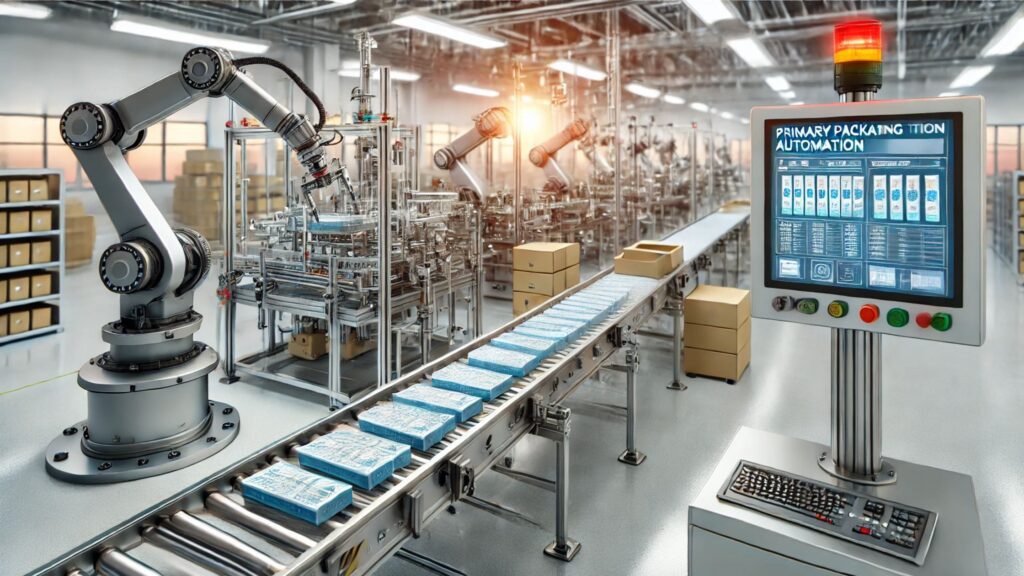In today’s fast-paced manufacturing environment, efficiency and precision are paramount. As industries strive to meet growing consumer demands while maintaining quality and reducing costs, primary packaging automation has emerged as a game-changer. From pharmaceuticals to food and beverage, automated primary packaging solutions are transforming production lines and streamlining operations.
What is Primary Packaging Automation?
Primary packaging refers to the first layer of packaging that comes into direct contact with a product, such as blister packs for pharmaceuticals, bottles for beverages, or pouches for snacks. Automating this process involves the use of robotic systems, conveyors, filling machines, and advanced software to package products with minimal human intervention.
Key Benefits of Primary Packaging Automation
- Increased Efficiency & Speed Automated systems operate continuously, reducing downtime and maximizing output. High-speed packaging lines can process thousands of units per hour, far surpassing manual capabilities.
- Enhanced Product Safety & Hygiene With minimal human handling, the risk of contamination is significantly reduced. This is especially crucial in industries like pharmaceuticals and food production, where safety is a top priority.
- Improved Accuracy & Consistency Automation ensures precise measurements and uniform packaging, eliminating human errors such as underfilling, overfilling, or mislabeling.
- Cost Savings While the initial investment in automation technology may be high, the long-term savings in labor costs, material waste reduction, and improved efficiency make it a worthwhile investment.
- Scalability & Flexibility Modern packaging machines are highly adaptable, allowing manufacturers to handle different product types and packaging formats without major reconfigurations.
Trends Driving the Adoption of Primary Packaging Automation
- Integration of AI & Machine Learning: Smart automation systems can analyze production data, predict maintenance needs, and optimize performance.
- Sustainable Packaging Solutions: Automated systems are being designed to accommodate eco-friendly materials and reduce waste.
- IoT & Industry 4.0: Connectivity between machines and real-time data monitoring is enhancing efficiency and predictive maintenance.
Is Primary Packaging Automation Right for Your Business?
If your business is facing production bottlenecks, high labor costs, or quality control challenges, investing in primary packaging automation can drive significant improvements. By leveraging advanced technology, companies can stay competitive, enhance product quality, and future-proof their operations.
Final Thoughts
Primary packaging automation is no longer a luxury but a necessity in today’s competitive market. As technology continues to evolve, businesses that embrace automation will gain a significant edge in efficiency, cost savings, and product consistency.
Are you ready to revolutionize your packaging process? Explore automation solutions today and take the first step towards a smarter, more efficient production line.
Related Articles
- The Art and Science of Packaging | Trends, History & Future
- Chocolate Primary Packaging: Ensuring Freshness, Safety, and Appeal
- Pharmaceutical Primary Packaging: Ensuring Safety and Efficacy
- Primary Packaging Examples: Understanding Their Importance
- Primary Packaging vs Secondary Packaging: Understanding the Differences
- The Future of Smart Packaging: Innovation at Its Best
- The Importance of Industrial Packaging in Modern Supply Chains
- The Power of Brand Packaging: How It Shapes Consumer Perception
- The Art of Candy Packaging: More Than Just a Wrapper
- The Rise of Green Packaging: A Sustainable Future

